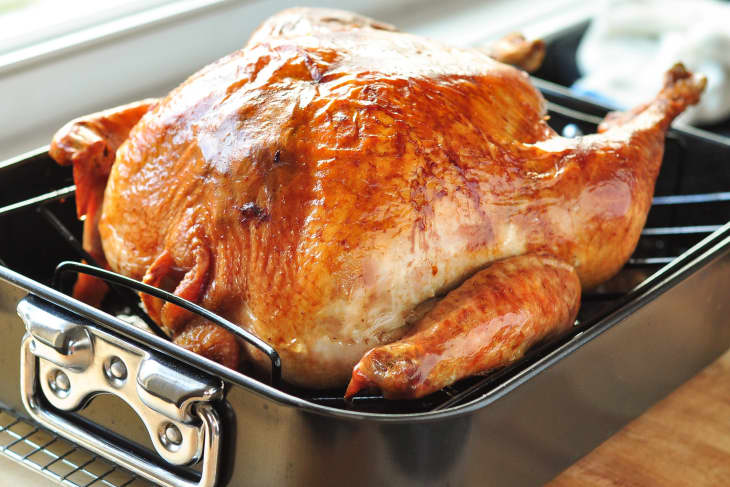How to Prepare a Frozen Turkey for Thanksgiving by Safely Thawing It

The bulk of us will carry home the turkey we purchase for Thanksgiving and other holidays frozen. And my goodness, the turkey is frozen solid. Although many of us have heard stories about the turkey still being frozen on Thanksgiving morning, you can easily prevent that predicament with a little preparation (and cope with it if you find yourself in it). Here's how to defrost a turkey while keeping your Thanksgiving meal on track.

How to Thaw a Turkey in the Fridge
Put the turkey on a roasting rack in a roasting pan, still in its packing. The rack isn't technically necessary if you don't have one or are using a different pan; nevertheless, it does help to raise the turkey and enable circulation on all sides for even thawing. To catch any liquids that might drip from the turkey's packing as it thaws, place the bird in a pan (which can potentially cross-contaminate other food in your fridge).
Refrigerate the turkey after moving it there. Verify that nothing is laying against or touching the turkey. Avoid putting anything else in the pan with the turkey because liquids from the turkey may spill as it thaws and could contaminate other items.
The turkey will fully defrost in the refrigerator. Refer to the guideline below and allow roughly 24 hours for every five pounds of turkey to get the total thawing time. If you have the opportunity, allow yourself a day or two as a buffer in case the thawing of the turkey takes longer than anticipated. It's preferable to give yourself more time than not because thawed turkeys can be stored for up to two days in the fridge.
How long does a refrigerated turkey take to thaw?
- 4- to 12-pound turkey: 1 to 3 days
- 12- to 16-pound turkey: 3 to 4 days
- 16- to 20-pound turkey: 4 to 5 days
- 20- to 24-pound turkey: 5 to 6 days
Note on brining: If you wanna brine your turkey, either in brine or with a dry brine, you can start while it is still partially frozen.
A Turkey's Thawing Process in Cold Water
If you use the cold water approach, you can hasten the thawing process if you're pressed for time. Simply immerse the frozen turkey in cold tap water while it is still in its packaging for around 30 minutes for every pound of turkey. This is the procedure.
1. Your turkey should be put in a big plastic bag. Your turkey's packaging may not always be watertight. Put the turkey in a sizable plastic bag to preserve it from getting wet during this rapid thawing procedure.
2. Put the turkey in a big bucket or pot. Make sure the turkey can be completely submerged in the pot and fits inside.
3. With cold water, fill the pot. Avoid using warm or hot water to hasten the thawing process because doing so extends the time the turkey is in the "danger zone" of 40°F to 140°F, which significantly raises the risk of food illness. If the turkey floats, weigh it down with a saucepan or another heavy pan.
4. Every 30 minutes, the water should be changed. Use the timing schedule below and, as mentioned above, allow 30 minutes for every pound of turkey. It is best to cook a turkey right away once it has thawed in cold water. If your turkey is still partially frozen on Thanksgiving Day, you can still cook it by following the instructions in this article.
How long does a turkey take to thaw in cold water?
- 2 to 6 hours for a 4- to 12-pound turkey.
- 6 to 8 hours for a 12- to 16-pound turkey
- 8 to 10 hours for a 16 to 20-pound turkey
- 10 to 12 hours for a 20 to 24-pound turkey.
How to Recognize Thawing in a Turkey
- When thawed, the breast meat should be flexible and springy to the touch.
- The wings and legs should move freely in their sockets when thawed.
- You should be able to easily remove the package of giblets and the interior should be clear of ice crystals.
Why a Turkey Should Not Be Thawed on the Countertop
The USDA advises against defrosting a turkey on the counter, thawing it in warm water, using a hair dryer, or using any other shortcuts. All of these techniques raise the temperature of the turkey to the "danger zone," which is between 40°F and 140°F. This significantly raises your chance of contracting food poisoning.
Recipe By: https://www.thekitchn.com/
Related: The Secret to the Perfect Turkey: How Long to Cook It
Post a Comment